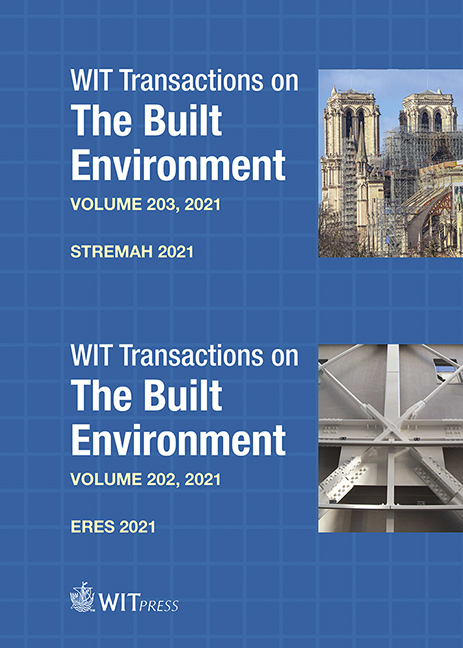Retrofitting of Heritage Structures
Design and evaluation of strengthening techniques
Edited By: S. Syngellakis, Wessex Institute of Technology, UK
Price
$172.00 (free shipping)
ISBN
978-1-84564-754-4
eISBN
978-1-84564-755-1
Pages
200
Transaction Series
WIT Transactions on State-of-the-art in Science and Engineering
Transaction Volume
62
Published
2013
Format
Hardback
The preservation of heritage architecture is a cultural objective rigorously pursued by communities and nations wishing to promote their history, civilisation and aesthetic achievements. Structures built in the remote past by traditional methods have suffered the consequences of extreme loading events, such as earthquakes, over long time periods. Retrofitting is an approach based on recent technological developments and scientific knowledge, whereby modern construction methods and materials are applied to the repair and strengthening of historical structures. This book aims to inform on current retrofitting techniques, their application to various types of historical architecture and their effectiveness to fulfil their purpose.
Retrofitted structural forms covered in the book vary widely from age old places of worship, such as churches, mosques and temples, as well as castles and palaces to more modern, distinguished private residences or public buildings, some of them designed by well known architects. Their methods of construction range from traditional, such as stone or brick masonry to more recent textile block systems and even reinforced concrete frameworks. Reference is made to detailed visual inspections of damaged structure providing valuable insight into possible causes of failure; such inspections are usually combined with material characterisation which is an essential input to numerical modelling for assessing the behaviour of the structure before and after retrofitting.
The book describes strengthening techniques for masonry walls including re-pointing, injection grouting and the use of steel ties. The use of reinforced concrete is proposed in the form of cast-in-place walls, jackets or tie-beams; that of carbon fibre reinforced laminates for strengthening walls and slabs. Innovative use of materials, such as shape memory alloys, self-compacting concrete or thin lead layers is also suggested. Particular attention is given to methods for moderating the consequences of destructive earthquakes. Seismic energy absorbing devices and base isolation systems are two effective means of providing protection against future seismic events although their application is often met with many technical challenges in practice.
Retrofitting of Heritage Structures: Design and evaluation of strengthening techniques will be of interest to members of academic institutions, government or private cultural preservation establishments and specialist consultant engineers.
The book contains very practical, technical advice on many issues; this would be of considerable interest to construction companies specialising in repairs and maintenance of historical structures.









